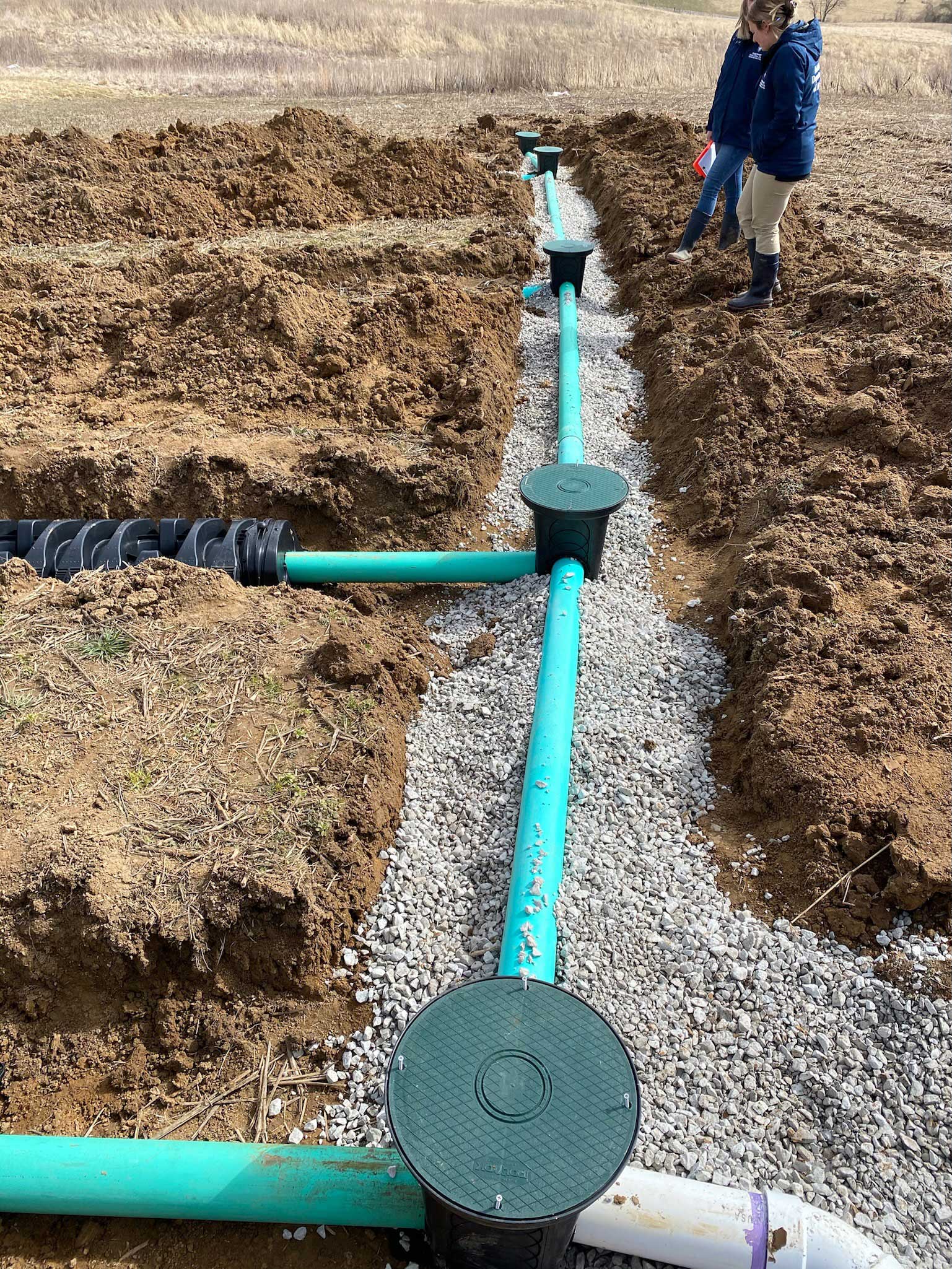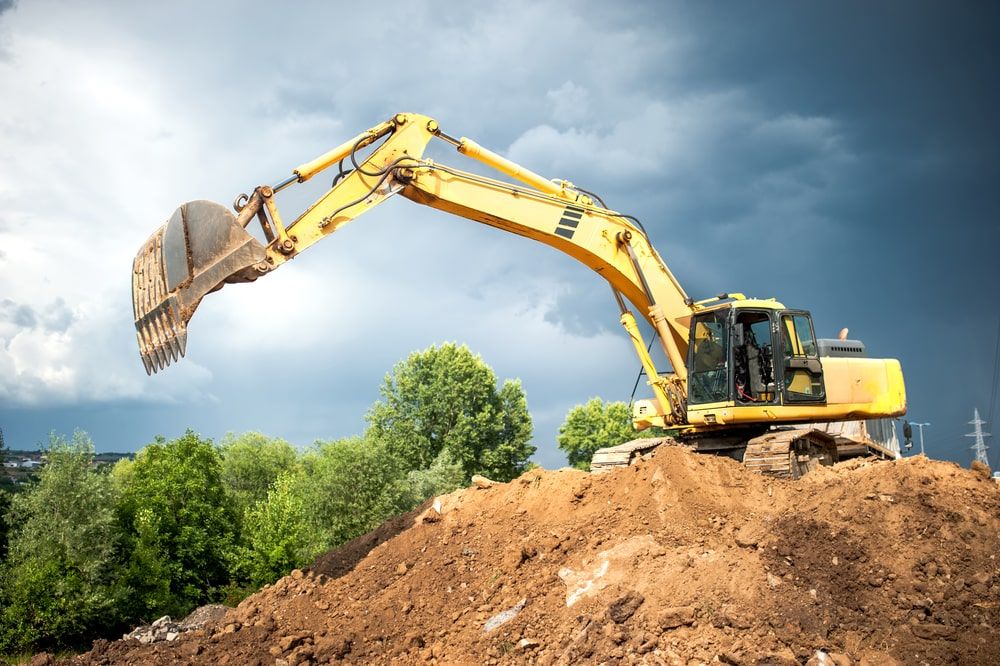Excavating Ohio - Top Excavation Professionals for Ohio Projects
Wiki Article
Introducing the Art of Excavation: Pro Tips for Safe and Efficient Excavating
In the world of excavation, the proficiency of efficient and safe excavating is an art type that needs knowledge, adherence, and accuracy to recognized techniques. As soil is transformed and earth is relocated, the complexities of excavation disclose themselves, demanding an eager understanding of devices, dirt composition, security protocols, and ecological factors to consider. The experience needed to browse these components effectively can suggest the distinction in between a successful excavation project and a prospective catastrophe. By unraveling the layers of this detailed process, a globe of understandings and techniques waits for those seeking to elevate their excavation abilities to brand-new heights.Significance of Proper Devices
To make certain the safety and efficiency of any excavation task, utilizing the ideal equipment is extremely important. Excavation projects differ in range and intricacy, varying from small property landscaping work to large-scale construction tasks.Excavators are essential items of equipment in any type of excavating operation. These flexible devices come in different sizes to suit various project needs. Tiny excavators are optimal for smaller sized tasks, while bigger excavators deal with a lot more extensive projects effectively. Backhoes are an additional essential tools kind, incorporating the features of a loader and an excavator in one device. They are valuable for jobs requiring versatility and ability to move.
In addition to excavators, other critical equipment consists of dump plates, excavators, and trucks. Dispose trucks are important for getting rid of and moving excavated materials, while plates are utilized for digging deep and slim trenches. Bulldozers stand out in tasks that require pushing huge amounts of dirt or debris. By purchasing the proper equipment, excavation projects can be finished safely, on time, and with precision.
Recognizing Soil Composition
A comprehensive understanding of dirt make-up is essential for performing excavation jobs with accuracy and safety. Understanding the various kinds of dirt is important as it directly affects excavation approaches, equipment choice, and overall task effectiveness. Dirt composition usually is composed of 4 main parts: sand, silt, clay, and natural issue. Each component has special residential or commercial properties that influence how soil reacts to excavation processes.Sand bits are the biggest and supply great water drainage however supply little cohesion. Silt fragments are smaller sized than sand however larger than clay, providing moderate water drainage and communication. Clay bits are the smallest and offer high cohesion however poor drainage. Raw material, such as decaying plant product, impacts soil fertility and stability.
Prior to commencing excavation, conducting soil examinations to identify its composition and characteristics is vital. This details aids in choosing the proper equipment, executing safety and security steps, and establishing excavation strategies customized to the specific dirt problems - excavating ohio. By understanding soil composition, excavation specialists can improve project results while ensuring security and adherence to best techniques
Precaution and Procedures
Recognizing soil make-up is the keystone whereupon precaution and procedures for excavation jobs are constructed, ensuring the health of workers and the success of the endeavor. When it pertains to safety and security throughout excavation, there are numerous vital steps that should be applied to reduce dangers and prevent crashes.Firstly, prior to any excavating begins, a detailed assessment of the site need to be carried out to recognize any possible hazards such as below ground utilities, unpredictable soil conditions, or neighboring structures that could present a danger. It is important to have a proficient individual look after the excavation process to ensure that all security protocols are adhered to purely.
Furthermore, all workers included in the excavation has to be appropriately trained in helpful hints risk-free digging practices and the appropriate operation of devices. By adhering to these safety measures and protocols, excavation tasks can be completed efficiently and without case.
Reliable Excavation Preparation
When beginning on an excavation task, careful planning is essential to guarantee efficiency, safety and security, and successful results. Reliable excavation planning includes numerous key actions that are vital for the smooth execution of the job.When the website assessment is full, the next step is to develop a clear timeline and schedule for the excavation tasks. This consists of determining the sequence of jobs, devices requirements, and manpower allotment. Appropriate scheduling aids stay clear of delays and makes sure that the task stays on track.

Additionally, interaction amongst all employee is extremely important during the preparation phase. Clear regulations, normal updates, and effective control are vital for an effective excavation project. By spending time and page effort in meticulous preparation, excavation groups can considerably improve performance, minimize risks, and accomplish effective results.

Handling Ecological Considerations
With raising emphasis on ecological sustainability in building techniques, taking care of environmental considerations has become an essential facet of excavation projects. Excavation tasks have the potential to impact the surrounding atmosphere via soil erosion, sediment runoff, environment disturbance, and contamination of water resources. To reduce these dangers, it is vital to execute ideal practices that prioritize ecological defense.
In addition, correct waste management is important to avoid dirt and water contamination. Implementing procedures for the disposal of harmful products, recycling of waste materials, and lessening making use of unsafe chemicals can considerably decrease the environmental effect of excavation jobs. By integrating these methods into excavation preparation and implementation, construction firms can guarantee that their jobs are not only secure and efficient yet additionally ecologically liable.
Verdict
In final thought, mastering the art of excavation needs a thorough understanding of appropriate devices, dirt composition, precaution, and effective click site preparation. By following these guidelines and thinking about ecological elements, excavations can be conducted securely and efficiently. It is critical to focus on safety and efficiency in every digging project to ensure successful end results.As soil is turned and earth is moved, the ins and outs of excavation reveal themselves, requiring a keen understanding of tools, soil structure, security procedures, and environmental factors to consider.To guarantee the security and effectiveness of any kind of excavation task, using the appropriate tools is vital.A detailed grasp of soil make-up is fundamental for carrying out excavation jobs with accuracy and security. Comprehending the various kinds of dirt is crucial as it directly impacts excavation methods, devices choice, and overall job performance. By understanding soil composition, excavation specialists can boost project results while making sure security and adherence to ideal techniques.
Report this wiki page